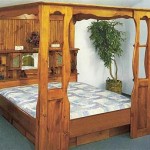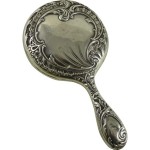How To Frame An Old Medicine Cabinet Mirror
Old medicine cabinet mirrors, often found during bathroom renovations or salvaged from older homes, possess a unique charm and character. Rather than discarding these relics, framing them offers an excellent opportunity to repurpose them into decorative wall mirrors, adding a touch of vintage elegance to a space. Framing not only enhances the aesthetic appeal of the mirror but also protects its edges from chipping and further deterioration. This article provides a comprehensive guide on how to frame an old medicine cabinet mirror, covering various approaches, materials, and essential considerations for achieving a professional-looking result.
Assessing the Mirror and Planning Your Frame
Before embarking on the framing process, it's crucial to thoroughly assess the condition of the mirror. Inspect the glass for any existing cracks, chips, or delamination. While minor imperfections can be incorporated into the vintage aesthetic, significant damage may compromise the structural integrity and necessitate repair or replacement. Carefully clean the mirror surface using a glass cleaner and a lint-free cloth to remove any dirt, grime, or residue that may interfere with the adhesion of the frame.
Once the mirror is clean and inspected, determine the desired style and dimensions of the frame. Consider the overall décor of the room where the framed mirror will be displayed. Choose a frame style that complements the existing aesthetic, whether it's modern, rustic, traditional, or eclectic. Measure the mirror's dimensions accurately – length, width, and thickness – as these measurements will dictate the size and design of the frame. Take into account any overhang or reveal you desire between the mirror edge and the frame; this is a personal preference that contributes to the overall visual appeal.
Sketching a design can be helpful in visualizing the final product. Explore different frame profiles, materials, and finishes. Consider whether you prefer a simple, minimalist frame or a more elaborate, decorative one. Also, think about the method of attachment; will the mirror be permanently adhered to the frame or will it be held in place with clips or a backing board?
Selecting Materials and Tools
The choice of materials plays a significant role in the final look and durability of the framed mirror. Wood is a popular and versatile option, offering a wide range of species, grains, and finishes. Pine is an affordable and readily available choice, suitable for painting or staining. Hardwoods like oak, maple, or walnut provide greater durability and a more refined appearance. Alternatively, metal frames, such as aluminum or steel, offer a sleek, contemporary aesthetic. Recycled materials, such as reclaimed wood or architectural salvage, can add a unique and eco-friendly touch. The desired aesthetic and budget should guide the material selection process.
In addition to the framing material, gather the necessary tools for the project. A miter saw is essential for accurately cutting the frame pieces at 45-degree angles to create clean, seamless corners. Clamps are needed to hold the frame pieces securely together while the adhesive dries. A measuring tape, pencil, and square are crucial for precise measurements and marking. Sandpaper, wood filler (if using wood), and finishing supplies will be necessary for preparing the frame surface and achieving the desired finish. Safety glasses and dust masks are important for protecting yourself during the cutting and sanding processes.
For adhering the mirror to the frame, select a mirror-specific adhesive. Standard construction adhesives may contain solvents that can damage the silvering on the back of the mirror. Mirror mastic is a specialized adhesive formulated to be safe for use with mirrors and provides a strong, permanent bond. Alternatively, silicone-based adhesives can also be used.
Constructing the Frame
With the materials and tools gathered, the construction of the frame can begin. Cut the frame pieces to the required lengths, ensuring that the mitered corners are precise. Accuracy is crucial at this stage to ensure a seamless, professional-looking frame. Dry-fit the frame pieces together to check for alignment and any gaps in the corners. Make any necessary adjustments before applying adhesive.
If using wood, apply wood glue to the mitered edges and clamp the frame pieces together. Ensure that the corners are aligned and square. Use corner clamps or bar clamps to apply even pressure to the joints. Wipe away any excess glue with a damp cloth. Allow the glue to dry completely according to the manufacturer's instructions, typically at least 24 hours. Once the glue is dry, remove the clamps and inspect the joints for any gaps or imperfections. Fill any gaps with wood filler, allow it to dry, and then sand it smooth.
For metal frames, welding or soldering may be required to join the corners, depending on the type of metal and the desired method of attachment. Alternatively, metal corner connectors or screws can be used. Ensure that the corners are securely fastened and that the frame is square.
Finishing the Frame
Once the frame is constructed, it's time to apply the desired finish. For wood frames, sanding is essential to create a smooth, even surface. Start with a coarser grit sandpaper, such as 120-grit, and gradually progress to finer grits, such as 220-grit or 320-grit. Sand with the grain to avoid scratching the wood. After sanding, remove any dust with a tack cloth.
Apply a primer to the frame to seal the wood and provide a uniform base for the paint or stain. Choose a primer that is compatible with the chosen finish. Allow the primer to dry completely before proceeding. For painted finishes, apply multiple thin coats of paint, allowing each coat to dry thoroughly before applying the next. For stained finishes, apply the stain according to the manufacturer's instructions, wiping away any excess stain with a clean cloth. Once the stain is dry, apply a clear coat of varnish or lacquer to protect the finish and add durability. Multiple coats of clear coat may be applied for enhanced protection.
For metal frames, clean the surface with a degreaser to remove any oil or residue. Apply a primer specifically designed for metal to prevent rust. Once the primer is dry, apply the desired paint or finish. Powder coating is a durable and long-lasting option for metal frames.
Attaching the Mirror to the Frame
With the frame constructed and finished, the final step is to attach the mirror. Apply a bead of mirror mastic or silicone adhesive to the back of the mirror, following the manufacturer's instructions. Distribute the adhesive evenly to ensure a strong, uniform bond. Carefully position the mirror within the frame, ensuring that it is centered and aligned. Press the mirror firmly against the frame and hold it in place until the adhesive sets. Use masking tape to secure the mirror to the frame while the adhesive cures. Allow the adhesive to cure completely, typically 24-48 hours, before removing the tape.
Alternatively, instead of adhering the mirror directly to the frame, consider using clips or a backing board to hold the mirror in place. This allows for easier removal or replacement of the mirror in the future. Cut a backing board from plywood or hardboard to fit the inside dimensions of the frame. Install metal or plastic clips around the perimeter of the frame to hold the mirror against the backing board. This method offers greater flexibility and allows for easy access to the back of the mirror for cleaning or repairs.
Regardless of the attachment method, ensure that the mirror is securely fastened to the frame and that there are no gaps or weak points. Once the adhesive is cured or the clips are in place, inspect the finished product carefully to ensure that the mirror is properly framed and ready for display.

Old Medicine Cabinet Gets A Facelift For 30 Hometalk

Old Medicine Cabinet Gets A Facelift For 30 Hometalk

Medicine Cabinet Frame Update Atop Serenity Hill

Frame Out Your Old Medicine Cabinet For A Totally Fabulous Makeover Diy Bathroom Mirror Trendy

Frame Update To Medicine Cabinet Atop Serenity Hill

Frame Update To Medicine Cabinet Atop Serenity Hill

Diy Medicine Cabinet With Mirror Shanty 2 Chic

Updating A Brass Medicine Cabinet Flashback Friday The Kim Six Fix

Diy Pottery Barn Inspired Medicine Cabinet Bathroom Mirror Makeover Frames

How To Update A Medicine Cabinet Without Replacing It Trendy Bathroom Mirror Bathrooms Remodel








